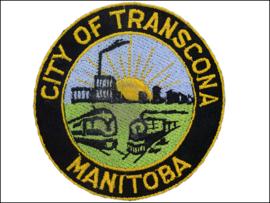Both the Rural Municipality and the Village of Brooklands were incorporated on June 10, 1921 through Order in Council No. 36806. Originally part of the Rural Municipality of Rosser, Brooklands qualified for village status under section 9 of chapter 133 of The Municipal Act. The Letters Patent incorporating Brooklands as a village describe the municipality’s original boundaries as “comprising not more than 640 acres, formerly comprised within the limits and extent of the Rural Municipality of Rosser, bounded on the south by Notre Dame Avenue, on the east by Keewatin Street, on the north by Geyser Avenue, and on the west by the center line running north and south of section 14 in township 11 in range 2 east of the first principal meridian in the Province of Manitoba.” On October 4, 1961, under section 16 of The Municipal Act and through Order in Council No. 1207, the Village of Brooklands became a Town. Six years later, in 1967, the Town of Brooklands amalgamated into the City of St. James. In 1968, a further merger between the City of St. James and the Rural Municipality of Assiniboia resulted in formation of the new City of St. James-Assiniboia, which in turn joined eleven other municipalities in amalgamation with the City of Winnipeg in 1972.
Note that from 1939 until 1954, the Village of Brooklands was under the jurisdiction of the Municipal and Public Utility Board. In 1959, after approximately four years of independence, the Village was taken back under the supervision of the Public Utility Board. In 1954, after nearly eighteen years under a provincial trustee, Brooklands was granted the right to administer its own school affairs.
As in other municipalities, government organization in Brooklands was dictated by its letters patent. Accordingly, council consisted of a mayor, sometimes called a reeve, and four councilors elected by qualified electors of the village/town. Council duties included the formulation of public policy, implementation and administration. Like other municipal councils, policy administration was delegated to standing committees comprised of council members. Standing committees were: finance, by-laws, public works, social welfare, water works, fire and police services. In addition to these functions, the municipality was responsible for assessment, tax collection, elections, and for at least part of its history, overseeing a school district. In the 1960’s, with powers acquired when it achieved Town status, council established a Parks Board and an Industrial Development Board.
Typically, daily operations within a municipality are carried out by line departments. It is likely that these records were merged into departmental records in the City of St. James following the merger in 1967, and subsequently into record series in the City of St. James-Assiniboia and the City of Winnipeg at amalgamation. Remaining records for the Village and Town of Brooklands provide little information on departmental organization or operations.









